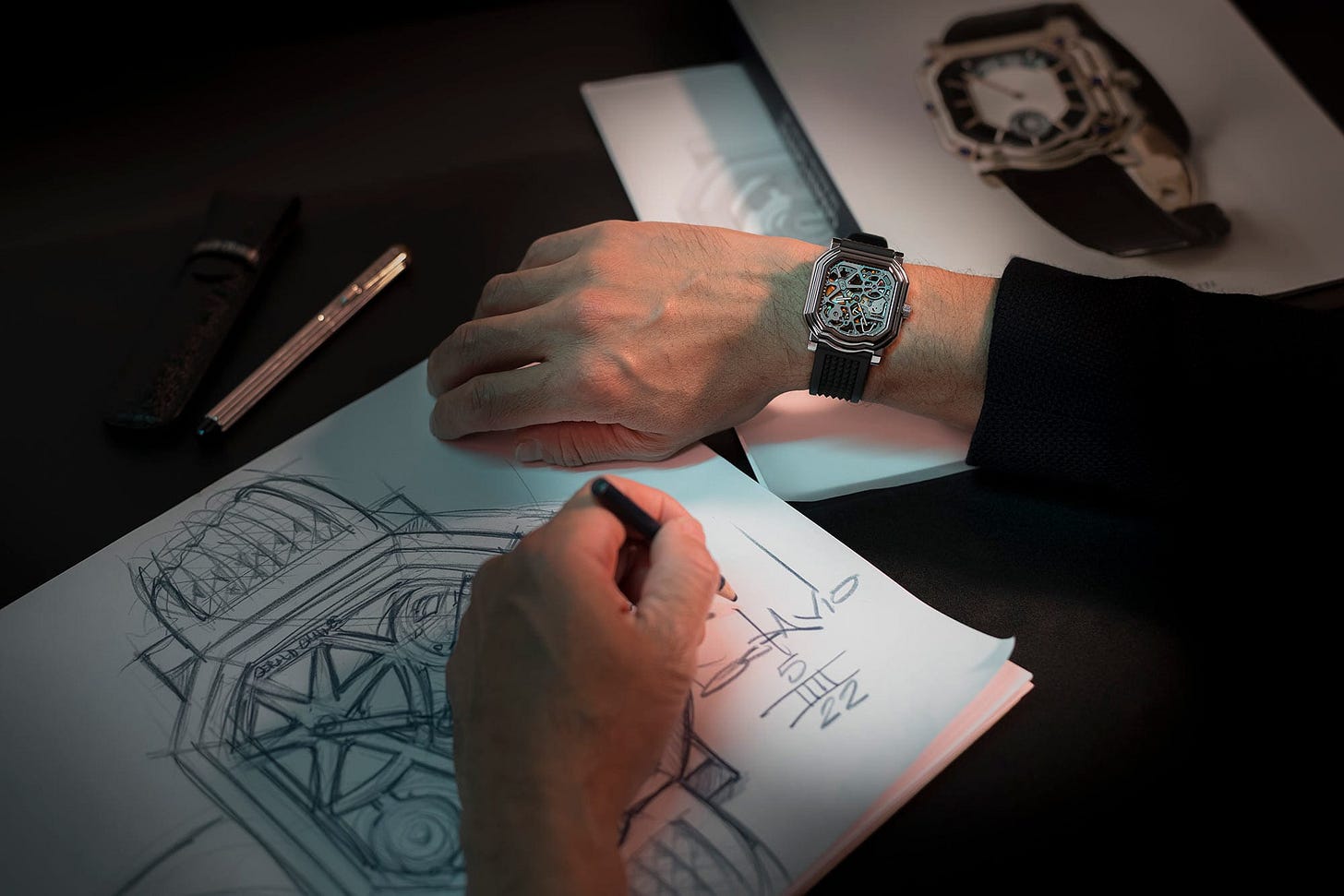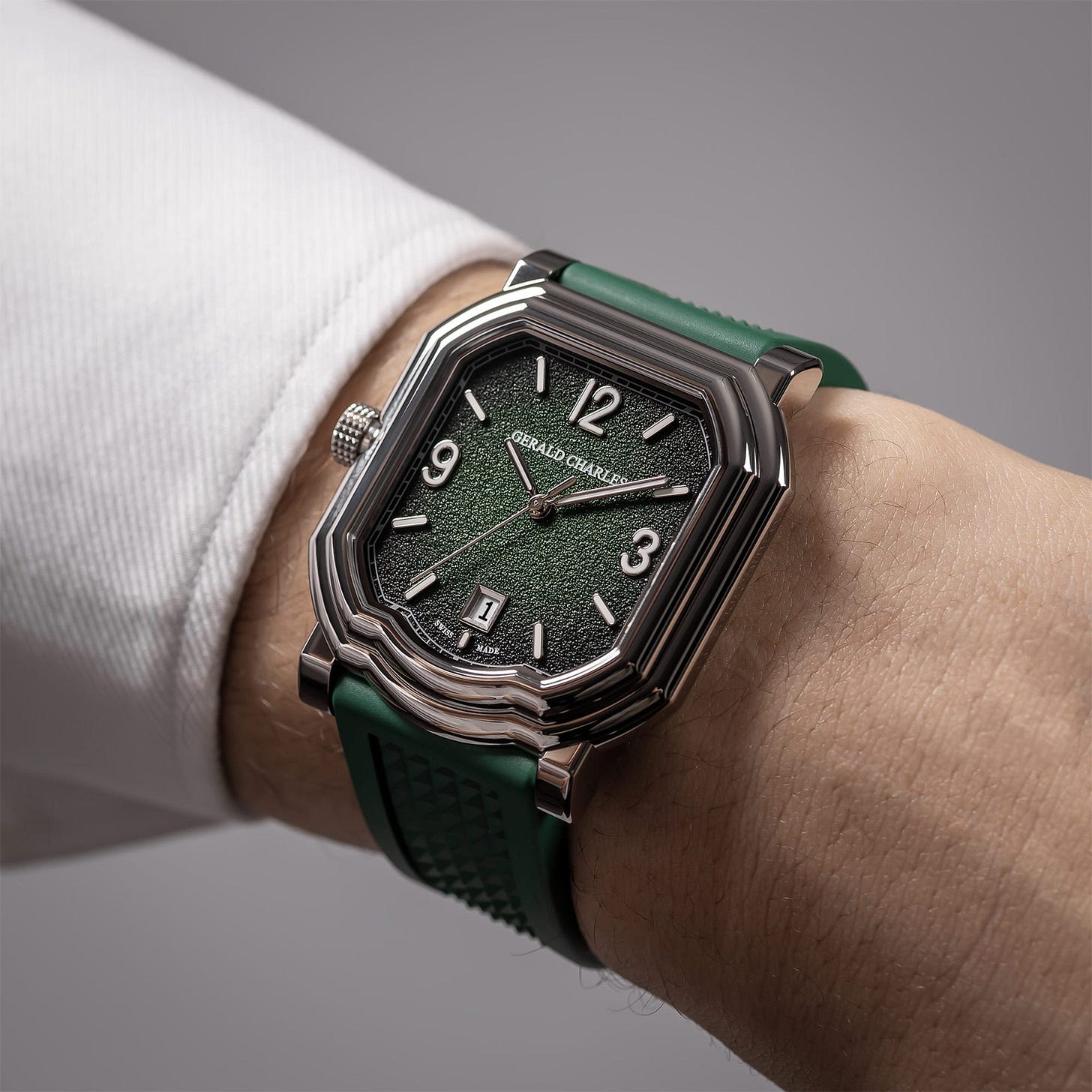WA Interviews: Gerald Charles
In this interview with Federico Ziviani, General Manager of Gerald Charles, we talked about the difficulties and achievements in the years that have followed the brand's relaunch
With today's interview we are inaugurating a new format that will take place within the WatchAnalytics blog. We are planning to meet many personalities in the watchmaking world to bring you their opinions and ideas, starting, as always, with the market.
I had the opportunity to interview Federico Ziviani, General Manager of Gerald Charles, who has personally contributed to the relaunch of this brand. What you'll find below, however, will not be a traditional interview where we introduce the maison or talk about what's new, but will focus on the business aspect. We will talk about what Gerald Charles' vision is, how the company has developed, how it intends to develop, and much more.
Here's what we talked about.
What were the biggest difficulties you encountered in the brand relaunch phase?
We ourselves were the main difficulty. When Gerald Genta was alive he would wake up and design watches, he was the mastermind behind everything: brand philosophy, creative direction, and watch design. After his death in 2011, the biggest difficulty was to continue in the direction he had set while staying in step with the times.
The legacy that the Maestro left behind includes hundreds of watch drafts that he designed and that must be administered skillfully to keep his idea of watchmaking alive.
Coming from a classic and elegant heritage why did you decide to give watches a sporty interpretation? Are you planning a return to a more classical style?
What sets the Maestro case apart is its baroque and classical essence, these are uncommon lines, but they make the watch look very elegant. Originally this watch was designed by Genta with a crocodile strap, however, to adapt it to our days, Gerald Charles' management thought of using a rubber strap instead. This is the modernization step we mentioned earlier: reinterpreting Genta's ideas in a modern way. The choice of this strap was not made to follow the market trends of recent years, where sports watches dominate, but to propose a contemporary watch. We do not want to follow trends, we want to create watches that can be enjoyable to wear in today's day and age. From this small example, however, one can extrapolate our vision. It would be anachronistic to just faithfully replicate Genta's designs by sticking to the materials and uses that were made back in the day, we need to keep the legacy alive by making it current.
In what geographic areas do you have the most sales and what strategies have you developed because of this?
The first market is Italy. We, like many others in the industry, believe that Italy is a trendsetter, if a watch is successful in this country it is very likely that there can be global expansion. For these reasons we have always focused strongly on Italy, reaching 20 stores. We preferred to expand in locations that are heavily touristed and therefore can offer international visibility, especially in the luxury segment. Our plan has been to expand first in Europe, which, in our experience, is the most difficult continent to conquer. So we chose a physical mode for distribution, so that the customer could observe the watch live. I am very keen on the fact that the Maestro is observed up close because that is the only way to truly understand the fascination that this timepiece has. The strategy put in place has resulted in 90% of our sales coming from Europe and the Middle East (EMEA). What is missing is the expansion into Asia and America, which we are working on and expect great results from.
In developing this plan, we also placed great emphasis on the digital world, as a strong online presence promotes brand expansion globally. We have also strengthened our brand awareness with partnerships together with many sportsmen and women, especially tennis players.
What plans do you have for the future?
At the product level we are working to introduce one or two complications every year so as to continue the technical and mechanical development of the watch, as well as doing research and development to deepen the use of new materials. In terms of distribution, we want to focus even more on tennis to increase more the brand's value and presence in the sports scene. We would also like to increase our presence at more trade fairs so that more and more people can try the watch, because, as I said before, this is a watch that is appreciated even more when you see it in person.
What do you think about the secondary market? For a brand like yours can it represent an opportunity or is it a threat to be fought?
The thing we would like to give each of our collectors is the security that their watch will not lose value. However, we also want to avoid speculation around our products because it could lead to image damage. For these reasons we make few pieces, we make few special editions, and we are careful about who we deliver our watches to. Our ideal customer is someone who is fascinated by the story we tell and who loves our watches and our heritage. I also believe that if too many people buy watches with Fear Of Missing Out (FOMO), at the first hints of a price drop, the market quickly collapses. Another matter is when vintage and discontinued models reach high prices. The scarcity of supply sometimes justifies such high prices.
What emerges from Federico's words is a strong desire to keep the spirit of the Gerald Genta alive, especially since Federico's father and uncle knew and had worked together with the master. In addition to this important responsibility, there is also a strong willingness not to set limits but to always experiment and innovate.





